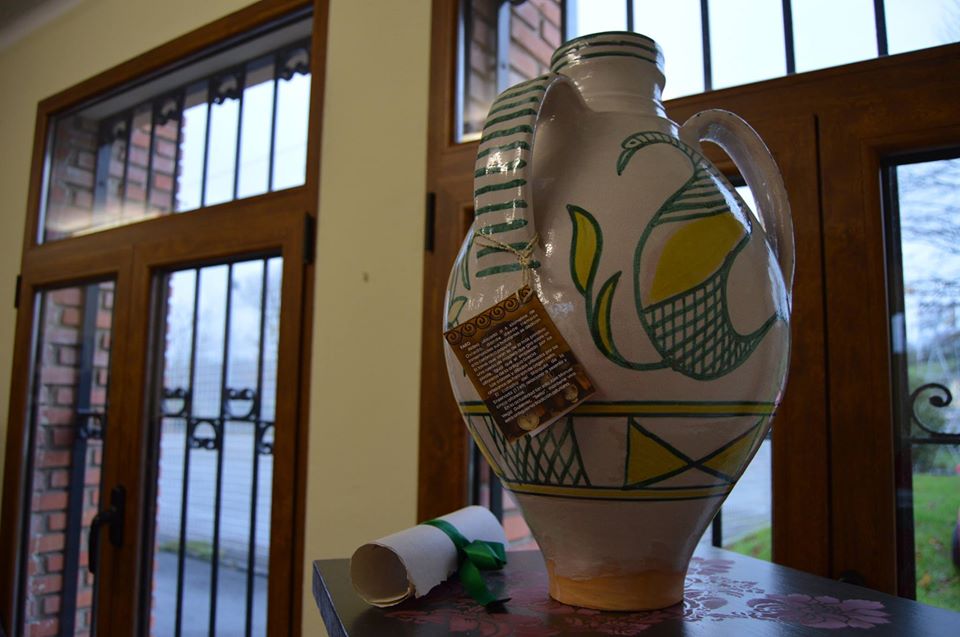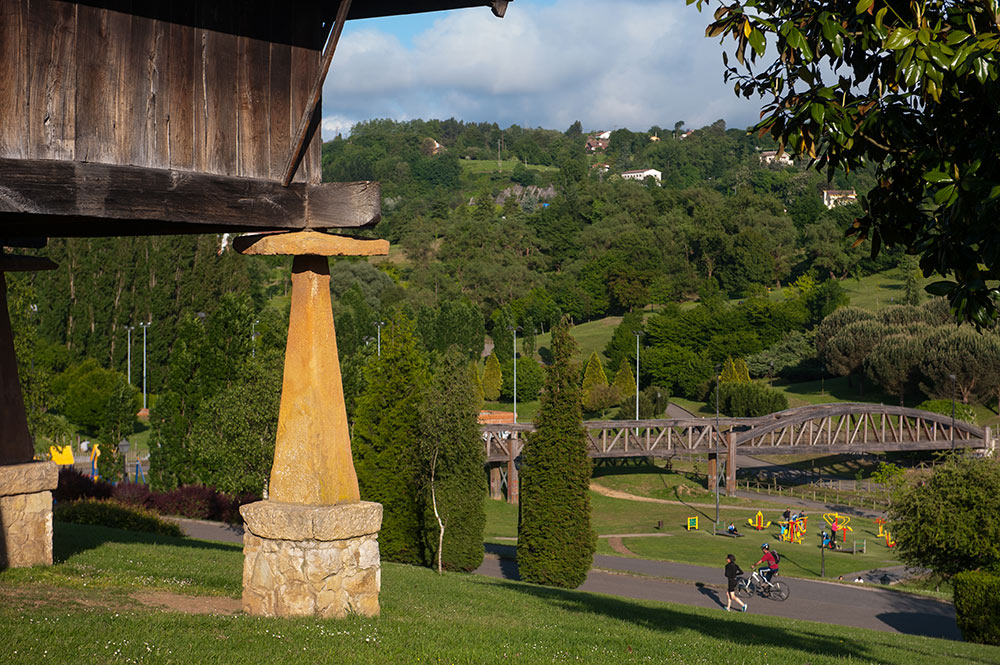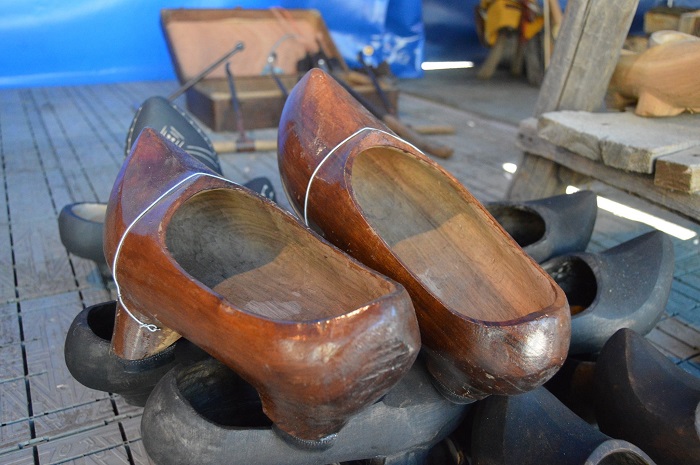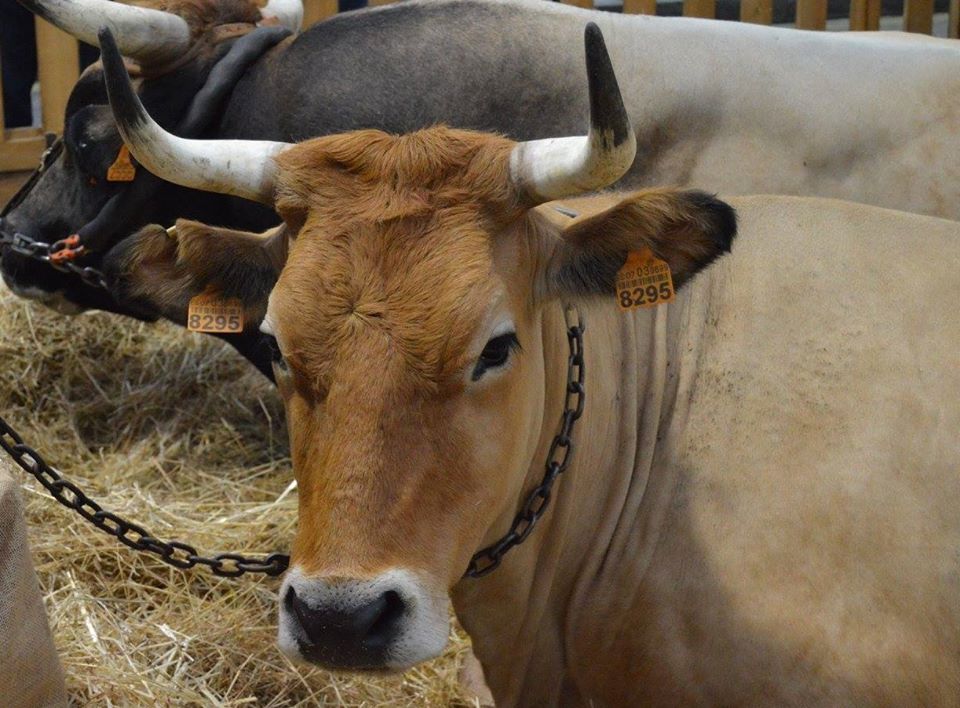
Rural area
RURAL AREA
If you fall in love with the city of Oviedo, you will be bewitched by its countryside. Just a few kilometres from the heart of the capital, there are dozens of towns where nature, in its pure state, merges with the popular architecture of Asturias. Forests, hamlets or smallholdings – a dwelling and a fenced plot of land – rise proudly on both sides of paths and trails. There is no lack of one of the most characteristic buildings in Asturias: the hórreos, constructions that were designed to keep and store food, safe from dampness and animals, and that, in some cases, have been transformed into country homes or lodges. Excellent examples of hórreos can be found in the town of Bueño. Just 5 kilometres from Oviedo, this country village of Ribera de Arriba concentrates one of the largest ethnographic collections of these buildings, more than 50 hundred-year-old hórreos, almost as many as houses, make up a unique opportunity if you would like to have a close look at this type of Asturian granary.
In addition to Hórreos, considered Cultural Heritage buildings in the Principality of Asturias, where there are about 10,000, you will also find other typical buildings: the paneras, rectangular structures supported on six or more pillars or "pegoyos" (compared to four used in the case of hórreos). One of the most typical images of rural Asturias is that of “riestras” (strings) of corn drying and browning as they hang from the railings of an hórreo.
Leaving behind these hamlets and their antojanas or antoxanas (surroundings) - the term derives from the union of the Latin words ante (front) and ostium (door) - visitors will now encounter apple tree groves or apple tree plantations, the origin of the “golden liquid of Asturias”: Cider, a key product in the gastronomy and one that marks the generous character of Asturians, who are happy to share.

In the country, you will also find areas dedicated to livestock farming. Asturias has several native cattle breeds (Asturiana de la montaña and Asturiana de los valles), sheep (Xalda) and pigs, (gochu asturcelta). And let’s not forget about the cheese. Asturias is the biggest cheese-making region in Europe, one of the reasons Oviedo will be hosting the World Cheese Awards. The region offers more than 40 varieties of cheese made from cow, sheep and goat milk, and four of those have their own designation of origin: Cabrales, Gamonéu, Casin and Afuega'l pitu. The countryside around Oviedo is also known for its honey. All these products make Asturian gastronomy one of our great tourist attractions. In the case of Oviedo, the countryside even has a Fair of their own, the Ascension Fair, when the city pays a tribute to the countryside and its people. For a few days in spring, Oviedo becomes a showcase for Asturian livestock and products, which can be purchased at the "mercau astur” (Asturian Market).
The rural area of Oviedo also hides some jewels of nature, such as the Guanga waterfalls, which form one of the most beautiful natural spots in our council where the Buanga stream flows down toward the Trubia river. There are also archaeological remains, such as those found in Faro that prove that the pottery activity in that town dates back to the 11th century.

Every corner of the countryside invites you to “caleyar” – walk along the caleyas, narrow country roads – or even to wear the “madreñas” (clogs usually made by hand from a single piece of wood) as the guardians of our history continue to do so, examples of love for and dedication to one of our great treasures: nature. Welcome to a Natural Paradise.


